 Last additions Last additions |

Water intake for Lake Biwa Canal No. 2Oct 23, 2005
|
|

Water intake for Lake Biwa Canal No. 2. Near Mihogasaki in Otsu, and adjacent to the boat racing arena.Oct 23, 2005
|
|

Water intake for Lake Biwa Canal No. 2Oct 23, 2005
|
|

View of TakeshimaOct 23, 2005
|
|

Another view of TakeshimaOct 23, 2005
|
|

View of TakeshimaOct 23, 2005
|
|

Oct 23, 2005
|
|

View of TakeshimaOct 23, 2005
|
|

Oct 23, 2005
|
|
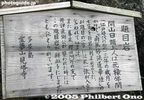
It says that the stone monument oozed blood when Ii Naosuke, Lord of Hikone, was assassinated in Tokyo by samurai radicals from Mito, Ibaraki Prefecture.Oct 23, 2005
|
|

Oct 23, 2005
|
|

View of Takeshima, an island with many shapes.Oct 23, 2005
|
|

Oct 23, 2005
|
|

View of Takeshima. Before the boat left, it circled around the island to show how different it looked from different angles.Oct 23, 2005
|
|

Oct 23, 2005
|
|

Nichiren statue. Nichiren was the founder of the Nichiren Sect of Japanese Buddhism.Oct 23, 2005
|
|

Lotus Sutra monument. In the early 17th century when the temple was built here, it took 3 years to carve out these characters on this stone slab. According to legend, this monument oozed blood when Ii Naosuke, Lord of Hikone, was assassinated in Tokyo.Oct 23, 2005
|
|

Oct 23, 2005
|
|

Nichiren statue is next to the giant stone monument.Oct 23, 2005
|
|

Oct 23, 2005
|
|

Oct 23, 2005
|
|

Oct 23, 2005
|
|

Oct 23, 2005
|
|

Oct 23, 2005
|
|

Nichiren templeOct 23, 2005
|
|

Enter TakeshimaOct 23, 2005
|
|

Oct 23, 2005
|
|

Oct 23, 2005
|
|

Nichiren Monument on Takeshima. This giant stone monument is inscribed with the prayer words "Namu Myo-horenge-kyo" from the Lotus Sutra. 南無妙法蓮華経Oct 23, 2005
|
|

Takeshima in Hikone, Shiga. MapOct 23, 2005
|
|

Oct 23, 2005
|
|

Kawau cormorants. Shiga has over 40,000 of these birds, and 30,000 of them live on Chikubushima whose trees are being destroyed by the droppings and branches broken off to make bird nests.Oct 23, 2005
|
|

Almost no one in the boatOct 23, 2005
|
|

Cormorants. There are to many of them and they deplete fisheries in the lake and cause forest damage.Oct 23, 2005
|
|

To TakeshimaOct 23, 2005
|
|

Hikone Castle as seen from Lake Biwa.Oct 23, 2005
|
|

Takeshima shows many different shapes depending on your viewpoint. A Nichiren temple and the priest's family are on the island. Boat for Takeshima at Hikone Port. The island is only 6.5 km from Hikone.Oct 23, 2005
|
|

Hikone PortOct 23, 2005
|
|

Takeshima ("Island of Many Views") is a small island (600 m circumference) in Lake Biwa off Hikone, accessible by a short boat ride from Hikone Port.Oct 23, 2005
|
|

Omi-Shiotsu Station with an old 111-series JR train.Oct 22, 2005
|
|

Old Hokuriku Line trainOct 22, 2005
|
|
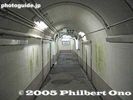
Omi-Shiotsu Station corridor to the tracks upstairs.Oct 22, 2005
|
|
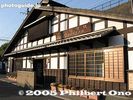
Omi-Shiotsu StationOct 22, 2005
|
|
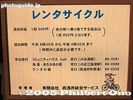
Bicycle rental sign. Most stations along Lake Biwa offer bicycles for rental.Oct 22, 2005
|
|
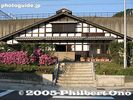
Omi-Shiotsu Station JR近江塩津駅Oct 22, 2005
|
|

Tickets pleaseOct 22, 2005
|
|

Shopping arcade on the west side of Omi-Imazu StationOct 22, 2005
|
|

Omi-Imazu station, west sideOct 22, 2005
|
|

In front of Omi-Imazu Station, East ExitOct 22, 2005
|
|

Omi-Imazu Station on JR Kosei Line, East ExitOct 22, 2005
|
|

Omi-Imazu Station, west sideOct 22, 2005
|
|
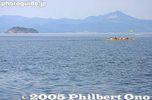
Chikubushima and Mt. Ibuki as seen from Imazu.Oct 22, 2005
|
|

Inside Omi-Imazu StationOct 22, 2005
|
|

Former bank buildingOct 22, 2005
|
|

Omi-Imazu Station, west exit has bus stops for local buses.Oct 22, 2005
|
|

Oct 22, 2005
|
|
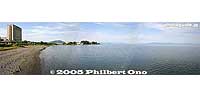
Lake Biwa shore in Imazu, with a boat landing in the distanceOct 22, 2005
|
|

Black kite going fishing トビOct 22, 2005
|
|

Inside the former bank buildingOct 22, 2005
|
|
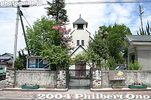
Imazu Church, designed by William Merrell Vories. Next to the former bank building also designed by Vories.Oct 22, 2005
|
|

Imazu's main lakeshore road leads to more tourist sights.Oct 22, 2005
|
|

List of cover versions by singers like Miyako Harumi, Kobayashi Akira, Watari Tetsuya, Baisho Chieko, Frank Nagai, and more.Oct 22, 2005
|
|

Imazu also has a few buildings designed by William Merrell Vories like this former bank building in Imazu, Shiga Now a coffee shop and exhibition space. MAPOct 22, 2005
|
|

Made of wood. The seats do not move. It is an obsolete racing boat.Oct 22, 2005
|
|
|
|

Road from Imazu Port to Omi-Imazu Station.Oct 22, 2005
|
|

This is the old Imazu Port building. It was a two-story building with a small restaurant on the 2nd floor. Ironically, it had no enclosed interior space for passengers.Oct 22, 2005
|
|

Oct 22, 2005
|
|

Lake Biwa from Imazu shore. Mt. Ibuki in the distance.Oct 22, 2005
|
|

Scenic water on sunny day, TakashimaOct 22, 2005
|
|

Oct 22, 2005
|
|

Imazu has a pebble beach. Some sand as well.Oct 22, 2005
|
|

The lantern/monument has the Verse 3 lyrics mentioning a red fire on shore in Imazu. This is thought to be a lamp on the dock.Oct 22, 2005
|
|

Chikubushima as seen from Imazu PortOct 22, 2005
|
|

The lantern is not accessible when the dock is not used.The song became a national hit in 1971 when singer Tokiko Kato recorded it. Numerous famous Japanese singers and groups have since released cover versions of the song.Oct 22, 2005
|
|

At the end of Imazu Port's dock is a lantern which is a song monument.Oct 22, 2005
|
|
|
|

Outdated photo: Red flame monument for Biwako Shuko no Uta song 琵琶湖周航の歌 歌碑Oct 22, 2005
|
|

The monument has an engraving of rowers and song lyrics.Oct 22, 2005
|
|
|

Outdated photo: Arriving Imazu Port. This old port building was replaced by new building in March 2020. MAPOct 22, 2005
|
|

West view of ChikubushimaOct 22, 2005
|
|

Oct 22, 2005
|
|

Oct 22, 2005
|
|

Interlaken boat to Imazu at Chikubushima.Oct 22, 2005
|
|

ChikubushimaOct 22, 2005
|
|

Oct 22, 2005
|
|

Oct 22, 2005
|
|

Oct 22, 2005
|
|

Inside Benzai Tendo. The statue of Benzaiten in that corner was donated by the father of Lord Azai Nagamasa. Oct 22, 2005
|
|

Chikubushima has some steep steps.Oct 22, 2005
|
|

Benzai TendoOct 22, 2005
|
|

Oct 22, 2005
|
|

Oct 22, 2005
|
|

Inside Benzai Tendo. Oct 22, 2005
|
|

Inside Benzai TendoOct 22, 2005
|
|

Inside Benzaiten-do Hall which houses one of Japan's three major statues of the Goddess Benzaiten.Oct 22, 2005
|
|

Three-Story Pagoda. Reconstructed in 2000.Oct 22, 2005
|
|

Inside Benzai TendoOct 22, 2005
|
|

Oct 22, 2005
|
|

Oct 22, 2005
|
|

Inside Benzai TendoOct 22, 2005
|
|

Benzaiten-do Hall, the main worship hall of Hogonji temple. Oct 22, 2005
|
|

Kannondo Temple and Karamon gate of Hogonji temple on Chikubushima island, Nagahama, Shiga.Oct 22, 2005
|
|
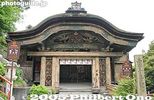
Karamon Gate 唐門 (National Treasure). Entrance to the Kannondo Temple. It might have come from Toyotomi Hideyoshi's original mausoleum in Kyoto. From the Momoyama Period. Chikubushima, Nagahama, Shiga.This could also have been the gate to the Gokuraku Bridge at Hideyoshi's Osaka Castle in the early 17th century.Oct 22, 2005
|
|

Oct 22, 2005
|
|

Chikubushima Port.Oct 22, 2005
|
|

Very old and worn statue of Pindola Bharadvaja (賓頭盧尊者) inide Karamon Gate.Oct 22, 2005
|
|

Oct 22, 2005
|
|

Oct 22, 2005
|
|

Very old and worn statue of Pindola Bharadvaja (賓頭盧尊者) inide Karamon Gate.Oct 22, 2005
|
|

Kannondo TempleOct 22, 2005
|
|

Very old and worn statue of Pindola Bharadvaja (賓頭盧尊者) inide Karamon Gate. Oct 22, 2005
|
|

Kannondo TempleOct 22, 2005
|
|

Kannondo TempleOct 22, 2005
|
|

Oct 22, 2005
|
|

Kannondo Temple 観音堂Oct 22, 2005
|
|

Kannondo TempleOct 22, 2005
|
|

Oct 22, 2005
|
|

Funa-roka boat corridorOct 22, 2005
|
|

Funa-roka boat corridorOct 22, 2005
|
|

Kannondo TempleOct 22, 2005
|
|

Tsukubusuma Shrine (National Treasure)Oct 22, 2005
|
|

Tsukubusuma Shrine (National Treasure)Oct 22, 2005
|
|
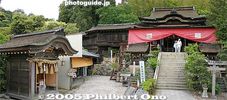
Tsukubusuma Shrine (National Treasure) on Chikubushima island, Nagahama, Shiga. It worships Benzaiten as well as the Dragon God and Azai-hime. 都久夫須麻神社Oct 22, 2005
|
|

Funa-roka boat corridor connects Tsukubusuma Shrine and the Kannon-do Hall. Important Cultural Property. From the Momoyama Period. 船廊下Oct 22, 2005
|
|

Oct 22, 2005
|
|

Throw your two dishes at the torii gate. If your dish goes under the torii gate, your wish will come true. Geez, look at all those failed wishes (shattered dishes).This is also one location where the film Idai Naru, Shurararabon (偉大なる、しゅららぼん The Great Shu Ra Ra Boom) was filmed. The scene where Ryosuke throws his small dish through the torii.Oct 22, 2005
|
|

Inside the Haiden Hall, you can buy these little dishes. Buy two of them. You write your name on one and your wish on the other dish. Then throw it through the torii gate.Oct 22, 2005
|
|

View of Nagahama from ChikubushimaOct 22, 2005
|
|

Oct 22, 2005
|
|

Tsukubusuma Shrine's Haiden HallOct 22, 2005
|
|

Oct 22, 2005
|
|
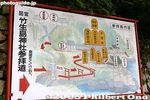
Oct 22, 2005
|
|

The snake is a messenger of the Goddess Benzaiten.Oct 22, 2005
|
|

Oct 22, 2005
|
|

Oct 22, 2005
|
|

Oct 22, 2005
|
|

Torii gate and bridge to Tsukubusuma Shrine, also called Chikubushima Shrine.Oct 22, 2005
|
|

Oct 22, 2005
|
|

Oct 22, 2005
|
|
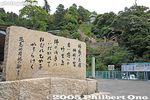
Lake Biwa Rowing Song (Biwako Shuko no Uta) monument. One of the verses mentions Chikubushima. This monument commemorates the song and that verse. 琵琶湖就航の歌 歌碑Oct 22, 2005
|
|

Boat landing 宝厳寺Oct 22, 2005
|
|

Whenever you see a torii gate, it indicates the grounds of Tsukubusuma Shrine. The shrine is actually integrated with Hogonji temple.Oct 22, 2005
|
|

Lake Biwa Rowing Song (Biwako Shuko no Uta) monument. Song details here. 琵琶湖就航の歌 歌碑Oct 22, 2005
|
|

Chikubushima is also home to Tsukubusuma (Chikubushima) Shrine which is also a National Treasure. Until 1868 when Buddhist temples and Shinto shrines were required to be separate, the shrine was part of Hogonji temple.Oct 22, 2005
|
|

Chikubushima is home to Hogonji Temple first built in 724 as ordered by the Emperor to worship the Goddess Benzaiten. It belongs to the Shingon Buddhist Sect (Buzan School) and it is the 30th temple in the 33-Temple Pilgrimage of Saigoku. 宝厳寺Oct 22, 2005
|
|

Chikubushima used to be a lush green island. Now it is turning brown by the thousands of cormorants which nest on the island, beyond the reach of humans. Oct 22, 2005
|
|
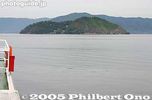
ChikubushimaOct 22, 2005
|
|

Approaching Chikubushima.Oct 22, 2005
|
|

Heading for Chikubushima.Oct 22, 2005
|
|

Oct 22, 2005
|
|

Oct 22, 2005
|
|

Top deck of boat going from Nagahama to ChikubushimaOct 22, 2005
|
|

Inside boat. Almost empty.Oct 22, 2005
|
|

Chikubushima in the distanceOct 22, 2005
|
|

Oct 22, 2005
|
|

Mt. Ibuki from Lake BiwaOct 22, 2005
|
|

Nagahama Castle from Lake BiwaOct 22, 2005
|
|
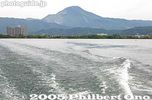
View of Mt. Ibuki as we leave Nagahama Port. Map for Nagahama PortChikubushima can be reached from Nagahama Port, Hikone Port, or Imazu Port on the other side of the lake. There are several round trips every day from either port. Nagahama boat schedule and Hikone boat scheduleOct 22, 2005
|
|

*The following photos were taken over 10 years ago and might be outdated. Latest photos are above.Nagahama Port is where you board the boat for Chikubushima. There are several round trips every day from either port. No reservations necessary. Within walking distance from Nagahama Station.Oct 22, 2005
|
|
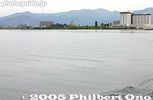
Nagahama from Lake BiwaOct 22, 2005
|
|

Top of Keage InclineThe boat would be loaded onto the trolley here, then taken down the incline. Or vice versa.Oct 21, 2005
|
|
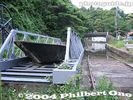
Top of Keage InclineThe boat would be loaded onto the trolley here, then taken down the incline. Or vice versa.Oct 21, 2005
|
|

Keage Hydroelectric Power Plant pipesOct 21, 2005
|
|
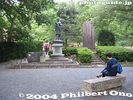
Park near top of Keage InclineOct 21, 2005
|
|

Statue of Sakuro Tanabe, the canal engineerIn the park near top of Keage Incline. The canal is lined with various monuments and writings, especially on the canal tunnel entrances.Oct 21, 2005
|
|
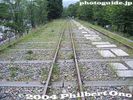
Keage InclineOct 21, 2005
|
|

Keage Incline boat trolleyThe Keage Incline was once restored in 1977. However, the sample boats are in poor condition.Oct 21, 2005
|
|
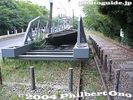
Keage Incline boat trolleyOct 21, 2005
|
|
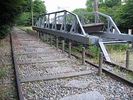
Keage Incline boat trolleyThe Keage Incline was a dry slope which connected the upper part of the canal with the lower part of the canal. Since the canal was disconnected by this dry slope, boat trolleys on rails ferried boats between the upper and lower sections of the canal. It was in operation until 1948.Oct 21, 2005
|
|

Keage InclineThe Keage Incline was a dry slope which connected the upper part of the canal with the lower part of the canal. Since the canal was disconnected by this dry slope, boat trolleys on rails ferried boats between the upper and lower sections of the canal. It was in operation until 1948.Oct 21, 2005
|
|

Bottom of Keage InclineThe Keage Incline was a dry slope which connected the upper part of the canal with the lower part of the canal. Since the canal was disconnected by this dry slope, boat trolleys on rails ferried boats between the upper and lower sections of the canal. It was in operation until 1948.Oct 21, 2005
|
|

Map of canal routeOct 21, 2005
|
|

Bottom of Keage Incline in KyotoOct 21, 2005
|
|
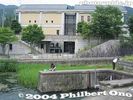
Lake Biwa Canal Museum at bottom of Keage InclineThe museum opened in 1996.Oct 21, 2005
|
|
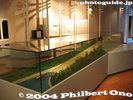
Lake Biwa Canal MuseumModel of Keage Incline.Oct 21, 2005
|
|
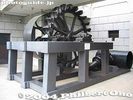
Pelton water wheel at Lake Biwa Canal MuseumUsed at the Keage Power Plant to generate electricity. The Keage Plant was Japan's first hydroelectric power plant.Oct 21, 2005
|
|

Oct 21, 2005
|
|
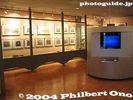
Lake Biwa Canal Museum in KyotoAt the end of the canal, there's this museum in Kyoto tracing the history of the canal.Oct 21, 2005
|
|

YamashinaOct 21, 2005
|
|
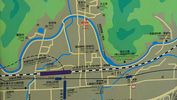
Yamashina map showing the exposed portion of the Lake Biwa Canal near JR Yamashina Station in Kyoto.Oct 21, 2005
|
|
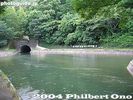
YamashinaOct 21, 2005
|
|
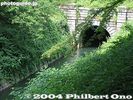
No. 1 Tunnel exitOct 21, 2005
|
|

Oct 21, 2005
|
|
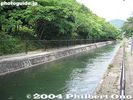
Oct 21, 2005
|
|
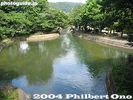
The canal in Kyoto near Yamashina.Oct 21, 2005
|
|
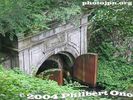
No. 1 Tunnel entrance. Oct 21, 2005
|
|

Water intake for Lake Biwa Canal No. 2. This is the second, almost parallel canal constructed in 1912.Oct 21, 2005
|
|

Water intake for Lake Biwa Canal No. 2. The canal is covered. The water supply for Kyoto and Osaka.Oct 21, 2005
|
|

Water intake for Lake Biwa Canal No. 2Oct 21, 2005
|
|

Notogawa Station, West Exit, also designed as a water wheel. This is one of Shiga's best-designed train stations. Beautifully designed station resembling a water wheel, the symbol of the town.Oct 20, 2005
|
|

Cycling and pedestrian path in red in Notogawa, Higashi-Omi.Oct 20, 2005
|
|

Cycling and pedestrian path in Notogawa, Higashi-Omi.Oct 20, 2005
|
|

Cycling and pedestrian path in Notogawa, Higashi-Omi.Oct 20, 2005
|
|

Oct 20, 2005
|
|

Oct 20, 2005
|
|

Oct 20, 2005
|
|

Oct 20, 2005
|
|

Oct 20, 2005
|
|

Oct 20, 2005
|
|

Uses a water wheel to grind rice.Oct 20, 2005
|
|

Oct 20, 2005
|
|

Poster for dragon canoe race in JuneOct 20, 2005
|
|

Oct 20, 2005
|
|

Oct 20, 2005
|
|

Oct 20, 2005
|
|

Oct 20, 2005
|
|

Oct 20, 2005
|
|

Oct 20, 2005
|
|

Oct 20, 2005
|
|

Symbol of NotogawaOct 20, 2005
|
|

Notogawa giant water wheel in Higashi-Omi, Shiga. MapOct 20, 2005
|
|

Canoe LandOct 20, 2005
|
|

Oct 20, 2005
|
|

Cycling path map in Notogawa, Higashi-Omi.Oct 20, 2005
|
|

Cycling and pedestrian path in Notogawa, Higashi-Omi.Oct 20, 2005
|
|

Oct 20, 2005
|
|
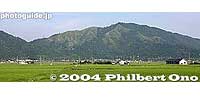
Mt. Kinugasa (Kannonji)Oct 20, 2005
|
|

Cycling path in Notogawa, Higashi-Omi.Oct 20, 2005
|
|

Cycling path in Notogawa, Higashi-Omi.Oct 20, 2005
|
|

Notogawa in Higashi-Omi is famous for its giant water wheel. Bike path to Notogawa, another area in Shiga with a good and scenic bike path.Oct 20, 2005
|
|

Bicycling to Sugaura.Oct 20, 2005
|
|

Adjacent museum called Oura Furusato Shiryokan. A museum of local artifacts and knicknacks.Oct 20, 2005
|
|

Maruko-bune, a traditional wooden boat mainly for shipping cargo across Lake Biwa in the old days. This used maruko-bune was donated by a local resident. 丸子船Oct 20, 2005
|
|

Black copper plates decorate the bow (ダテカスガイ). This checkered pattern was unique to Lake Biwa boats. The wood seams are stuffed with conifer fiber (槙縄) to repel water.Oct 20, 2005
|
|

Maruko-bune's trademark is this half-round cedar or cypress log on both sides. おも木Oct 20, 2005
|
|

Rudder hangs down from a torii-like brace (かさ木), also used as a mast rest when the mast is laid down. Most of the wood is Japanese conifer (槇の木).Oct 20, 2005
|
|

Maruko-bune were a vital transportation link between northern Japan and Kyoto/Osaka. Goods coming and going via the Sea of Japan also went over the lake.Oct 20, 2005
|
|

Maruko-bune boat hands.Oct 20, 2005
|
|

Maruko-bune crew.Oct 20, 2005
|
|

Maruko-bune wooden boat which was a common sight on Lake Biwa in the old days before trains came to fore. Near this area was a major maruko-bune port called Oura.Oct 20, 2005
|
|

The bow's tip is studded.Oct 20, 2005
|
|

Adjacent museum showing things from Oura.Oct 20, 2005
|
|

Maruko-bune exhibits.Oct 20, 2005
|
|

Major parts of a maruko-bune. For details see my video here.Oct 20, 2005
|
|

The sail is made of thick cotton material, replacing the old straw mat that didn't last long.Oct 20, 2005
|
|

Oct 20, 2005
|
|

Diorama of Oura Port. MAPOct 20, 2005
|
|
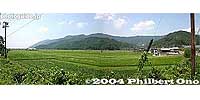
Near Nagahara StationOct 20, 2005
|
|

Maruko-bune Museum (Maruko-bune no Yakata). The maruko-bune was commonly used to transport cargo over the lake from the Hokuriku region to the Kyoto-Osaka region during the 17th and 18th c. MAPThe museum is a short bicycle ride from Nagahara Station (JR Kosei Line). 滋賀県西浅井町大浦582 丸子船の館Oct 20, 2005
|
|

Nagahara Station in the distance.Oct 20, 2005
|
|
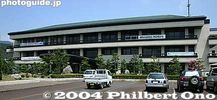
Nagahama City Hall, Nishi-Azai Branch. An incredibly large and beautiful town hall for a small town (Later merged with Nagahama.)Oct 20, 2005
|
|

Nagahara Station on the JR Kosei Line. A nice, loghouse station building. JR湖西線、永原駅Oct 20, 2005
|
|

Former Kunitomo gunsmith homeOct 20, 2005
|
|

Kunitomo Gun MuseumOct 20, 2005
|
|

Kunitomo teppo no sato Matchlock Museum (Kunitomo Gun Museum) 国友鉄砲の里資料館 MAPOct 20, 2005
|
|

Oct 20, 2005
|
|

Lotus Pavilion indoor water gardenOct 20, 2005
|
|

Water lilies.Oct 20, 2005
|
|

Water lilies and Lotus Pavilion.Oct 20, 2005
|
|

Oct 20, 2005
|
|
| 71466 files on 284 page(s) |
 |
 |
278 |  |
 |
|